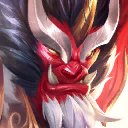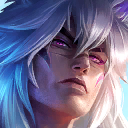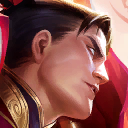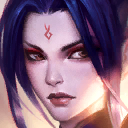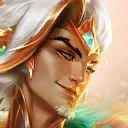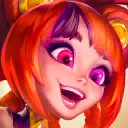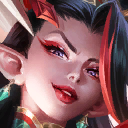Welcome to this beginner's guide to Teamfight Tactics, where we delve into the enchanting world of Set 11, infused with Asian artistry and the mysteries of Eastern legends. Just like a master calligrapher tracing their first strokes on a sheet of rice paper, let's explore the nuances of this game together. Hang on tight, as I share 10 tips and tricks that will enable any novice to approach the game more strategically and deepen their understanding and gameplay plans.
I've handpicked 10 tips and tricks that I believe are crucial for anyone starting TFT in Set 11 and who already knows the game's basic rules. I'll cover tips for optimizing your board and creating a powerful team, as well as share some handy tricks to make your gaming experience smoother. If this resonates with you, then welcome to the world of TFT, where every match is a blank canvas ready to be painted by your strategic choices!
1. Building a Comp with Two or Three Traits Maximum
You've probably faced this situation before, akin to staring at a blank page during a philosophy exam and struggling to write your first sentence, even if you understand the topic (or not). Starting to build an argument on a blank page is always challenging, but once you take the first step, everything unfolds naturally. TFT presents a similar difficulty—it's incredibly tough to know what kind of comp to play at the beginning of a match, especially for beginners. Therefore, my first tip is to gravitate towards extremely simple comps that allow you to progress in TFT while having fun. These comps are easy to recognize because they mainly rely on two or three maximum traits, with one dominant trait. For example, there's the Storyweaver comp, which summons Kayle to fight alongside you. The core trait of this composition is Storyweaver, supplemented by a few minor and interesting traits like Dragonlord, for instance.
I'll give you another example with the Heavenly vertical which provides plenty of stat bonuses for the whole team. This composition is supplemented by other minor traits such as Behemoth, Ghostly, Reaper, and Sage to add interesting bonuses for the main units.
2. Creating a Strong Board (Prioritize Star Upgrades)
For the second tip, let's talk about building a competitive team. As you already know, if you purchase three copies of a unit, it will level up and become stronger. Therefore, aiming for a two-star unit requires three copies of a one-star unit that you can buy from the shop. Similarly, for a three-star unit, you need three copies of a two-star unit, meaning you need nine copies of the one-star unit.
What you may not know is that a two-star unit is on average 1.8 times stronger than its one-star version. Let's revisit the Storyweaver composition I mentioned earlier—if all my units are two-star, then I have a team that's almost twice as strong as if they were all one-star.
Therefore, it's crucial to prioritize multi-star units, whether in the early game or late game—always try to build a team around these units.
3. Scout Opponents to Learn New Comps
Nobody's stopping you from copying in TFT! So, how do you efficiently copy an opponent? It's straightforward—every time your team gets crushed by another, make sure to visit your opponent's board by clicking on their little legend on the right. I'll take this opportunity to mention that it's called "scouting," **and it's very useful to scout regularly in TFT. ** You'll be able to see the units they're playing, the items they've equipped, the traits they've activated, and the augments they've chosen. Don't hesitate to take a screenshot and analyze it after the game to understand why they were so strong, and then start another game trying to play the same composition! This tip will help you progress well in TFT and also allow you to try out many different compositions to avoid getting bored quickly with the game!
4. Knowing Whom to Fight Next
Speaking of scouting opponents, did you know that you can anticipate the opponents you'll encounter next?
There are some rules in TFT that make matchmaking not entirely random. Simply put, you can't encounter the same opponent before 5 PVP rounds if there are still 8 players in the lobby. There are other advanced rules on matchmaking, but for starters, it's better not to know them and instead rely on the** little swords displayed under the opponents' little legends**.
If you see a little sword under an opponent, it means you may face them in the next round. So, don't hesitate to scout regularly who you'll be facing and adjust your positioning if necessary to increase your chances of winning the next fight!
5. Understanding Unit Pools
There's a hidden rule in TFT that isn't explicitly communicated in the game: unit pools.
In simple terms, there isn't an infinite number of copies of units in the game. So, if many players have certain units like Irelia on their boards, your chances of finding one decrease significantly.
Imagine each game as having a massive bag containing all the copies of units in the game. When a player rolls their shop, they randomly draw five copies of units from this shared pool, which is distributed among the eight players.
CHAMPION POOL
The number of available copies of units varies based on their tier. There are:
- 22 copies of each Tier 1 unit,
- 20 copies for Tier 2,
- 17 for Tier 3,
- 10 for Tier 4,
- 9 for Tier 5. So, if three players have a two-star Irelia, all nine copies of Irelia are already in play, making it impossible for you to find one.
ODDS
The probability of getting champions of different tiers depends on your level at the time of rolling. For instance, if you're level 6, you have a 30% chance of getting a Tier 1 unit, 40% for Tier 2, 25% for Tier 3, and 5% for Tier 4. Therefore, if you're searching for Tier 2 units like Riven or Neeko, being at level 6 increases your chances of finding them. However, don't expect to find legendary units at this level as the probability is 0%.
You may want to bookmark this post so you can easily find the correct number anytime: https://www.tacter.com/tft/guides/set-11-champion-pool-size-90f840d3
6. Knowing Which Items to Use (Utilize the UI)
Let's move on to items now. With so many items in the game, it can be easy to get a headache when you have to start crafting them. Riot is well aware of the difficulty in crafting items that correspond to units, and they recently added a tool in the game to guide new players.
To use it, simply right-click on a unit and hover over the dial below the item slots. You'll then see a shortlist of 8 items that Riot recommends for the specific unit, along with the recipe to craft them.
If you're a beginner, I highly recommend aiming to place three recommended items on your main units rather than spreading out one item on each character. Over time, you'll become capable of identifying the best items for your units without relying on this little aid.
7. Swapping Items When Upgrading Units
Since we're talking about items, let me slip in a little tip that very few beginners know.
If you happen to have two copies of a unit on the board, both equipped with items, and you're going to merge them into a unit with a star upgrade, you can control which items will remain on the unit and which ones will be transferred back to your bench.
Firstly, the game will always try to fill the three available item slots on the upgraded unit. If there's no more space, the game will randomly remove excess items and place them back on your bench.
However there's a priority, and here's how to play with it. If among the two copies of the unit merging, one has more valuable items to you than the other, leave that one on the board and place the other copy on the bench before purchasing the third copy that will initiate the merge. Thus, you signal to the game that you want to keep the items of the unit on the board, and these items will have priority when you upgrade your unit.
(See images above where I "tell" the game I want to keep my Yasuo with Titan, Trinity Force and Stoneplate)
Here's the full priority for the people who have attention for details:
Thieves Gloves on Board > Full items on Board > Thieves Gloves on Bench > Full items on Bench > Components.
8. Optimizing Mana Generation for Spells
The last point I want to address regarding items is optimizing items for mana generation.
As you know, units will use their special ability when their mana gauge fills up completely. And for many units, their impact in a fight depends mainly on their ability, so these units must have the right mana generation item to utilize their full potential.
There are three ways to obtain mana in the game:
- all units gain 10 mana with each basic attack,
- all units gain a bit of mana based on the damage they take,
- and some augments, traits, or items allow periodic mana generation (usually every 3 seconds).
Most tanks will generate mana by taking damage, and it's often unnecessary to give them mana generation items. Therefore, let's focus on the three main mana generation items for DPS units.
- Shojin is an item that grants 15 mana per basic attack instead of 10. It's excellent for any DPS unit with a mana gauge that is a multiple of 15 and is greater than or equal to 45, such as Azir and Hwei, for example.
- The Blue Buff is an item that reduces the mana gauge to 10, and it's an excellent item for any unit with 40 or less maximum mana. Units like Syndra and Kog'maw will particularly appreciate this item.
- And finally, we also have the Adaptive Helm, which generates mana every 3 seconds. In general, this item is slightly less optimal compared to the other two, but it serves as a very good replacement if you can't obtain the perfect components for Shojin or Blue Buff.
If you have doubt about how to build your items, check my cheat sheet that shows all the best 3 items for every champion carry in the game: https://www.tacter.com/tft/guides/best-items-for-all-champions-in-tft-set-11-36d59dfe
9. Earning More Gold through Interest, Even During Stage 1
And now for the last two tips I'd like to share, they concern gold generation.
After all, you need a large amount of gold to buy levels, roll the shops, and purchase units. Although everyone earns 5 gold per turn, there are ways to optimize gold generation that can allow you to double the amount of gold earned per turn.
The simplest and most well-known way is to generate interest. In TFT, the more gold you have, the more you'll earn through interest at a rate of 1 gold for every 10 gold increments. Of course, there's a limit, and you can't earn more than 5 gold in interest per turn, so there's no point in keeping more than 50 gold, unless you have a specific augment that allows you to go beyond the 5 gold interest. It's therefore important for you to quickly reach the first interest thresholds to snowball your economy and generate more gold than your opponents.
Here's a little tip: you can already start earning interest gold during the first stage before you face other players in PVP. So, don't hesitate to reach 10 gold as quickly as possible and have even more cash!
10. Generating More Gold than Others (Streaks)
The other way to generate gold every turn is to have a streak.
A streak is a consecutive number of PVP battles where you finish with the same score: either all losses or all wins. You'll earn:
- one additional gold if you have a streak of 3 or 4,
- 2 gold for a streak of 5,
- and 3 gold for a streak of 6.
This means that if you've had 6 consecutive losses or wins against other players, you can generate 3 gold per turn more than other players who aren't on a streak. Always try to be on a streak if you can afford it because it easily allows you to generate a large amount of money that other players won't have, making it easier for you to buy experience or search for specific units!
And there you have it, that's all for this beginner's guide to Teamfight Tactics, infused with the cultural and artistic richness of Set 11. I hope these 10 tips have been helpful to you and will allow you to dive into the TFT adventure with confidence and strategy. Remember that every match is an opportunity to hone your skills, much like an artist refining their brushstroke. I wish for your combinations to be as elegant as a work of art and for your ascent in the rankings to be as legendary as Eastern myths and tales. With that said, may luck be with you on the battlefield, and see you soon for new adventures in the TFT universe!
Don't forget to check the two provided cheat sheet and bookmark them as well:
- Champion Pool and Odds: https://www.tacter.com/tft/guides/set-11-champion-pool-size-90f840d3
- Best items for every champion: https://www.tacter.com/tft/guides/best-items-for-all-champions-in-tft-set-11-36d59dfe



